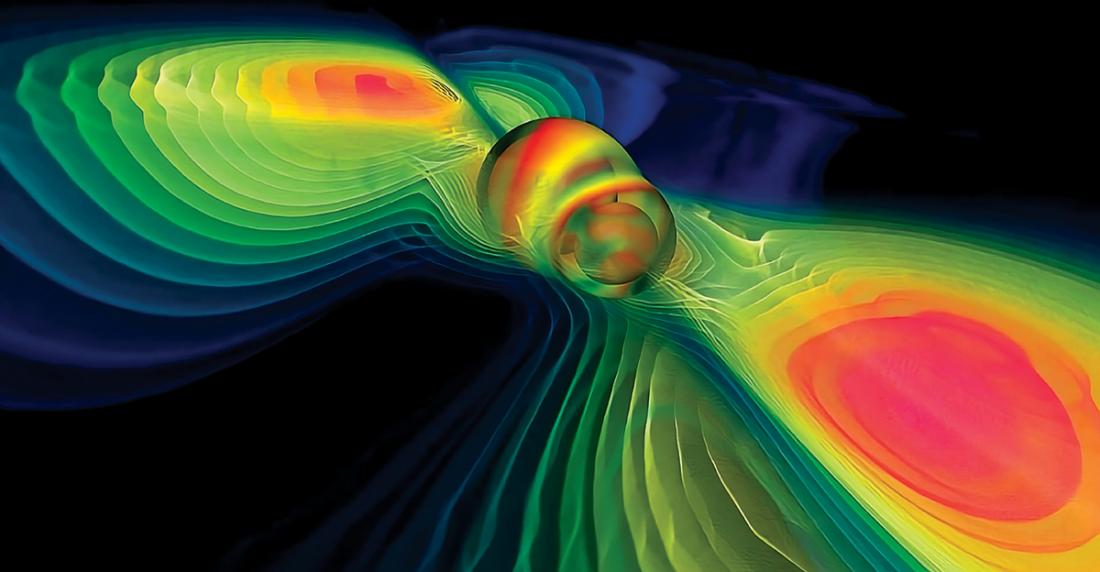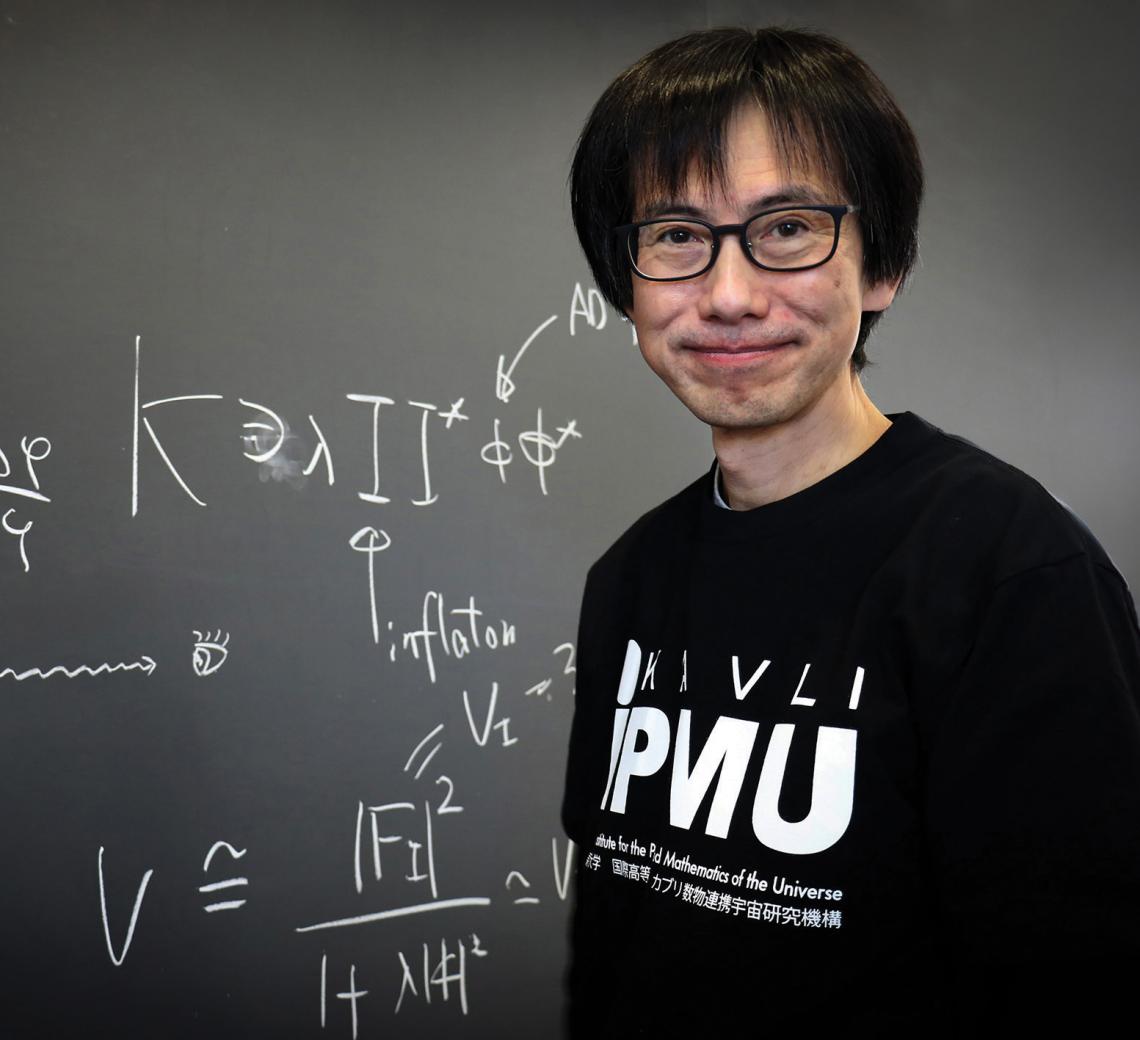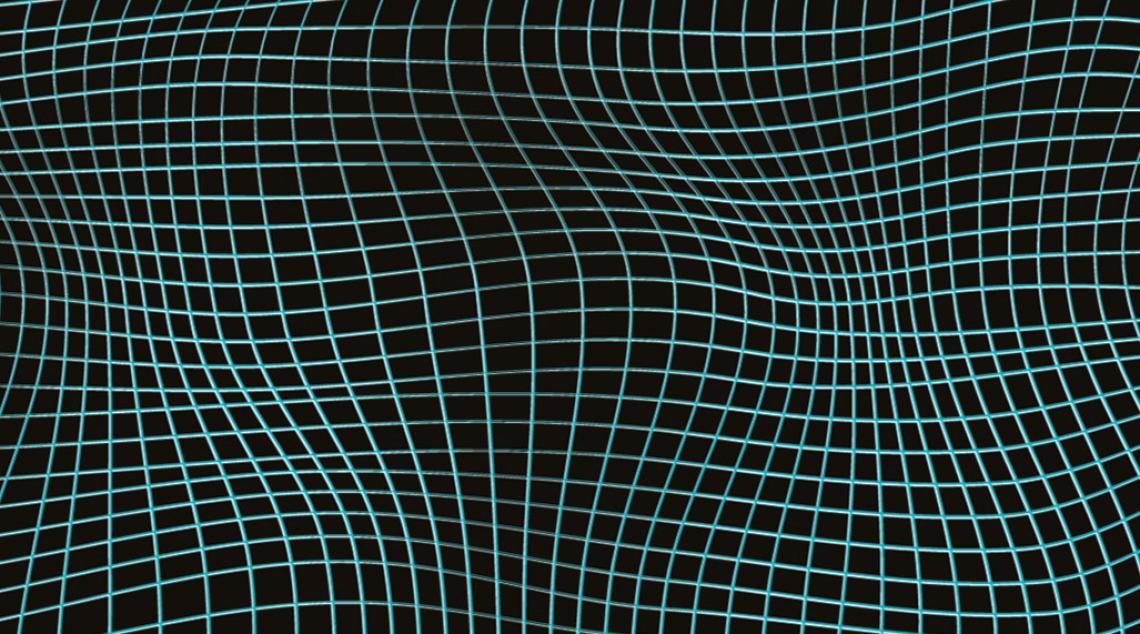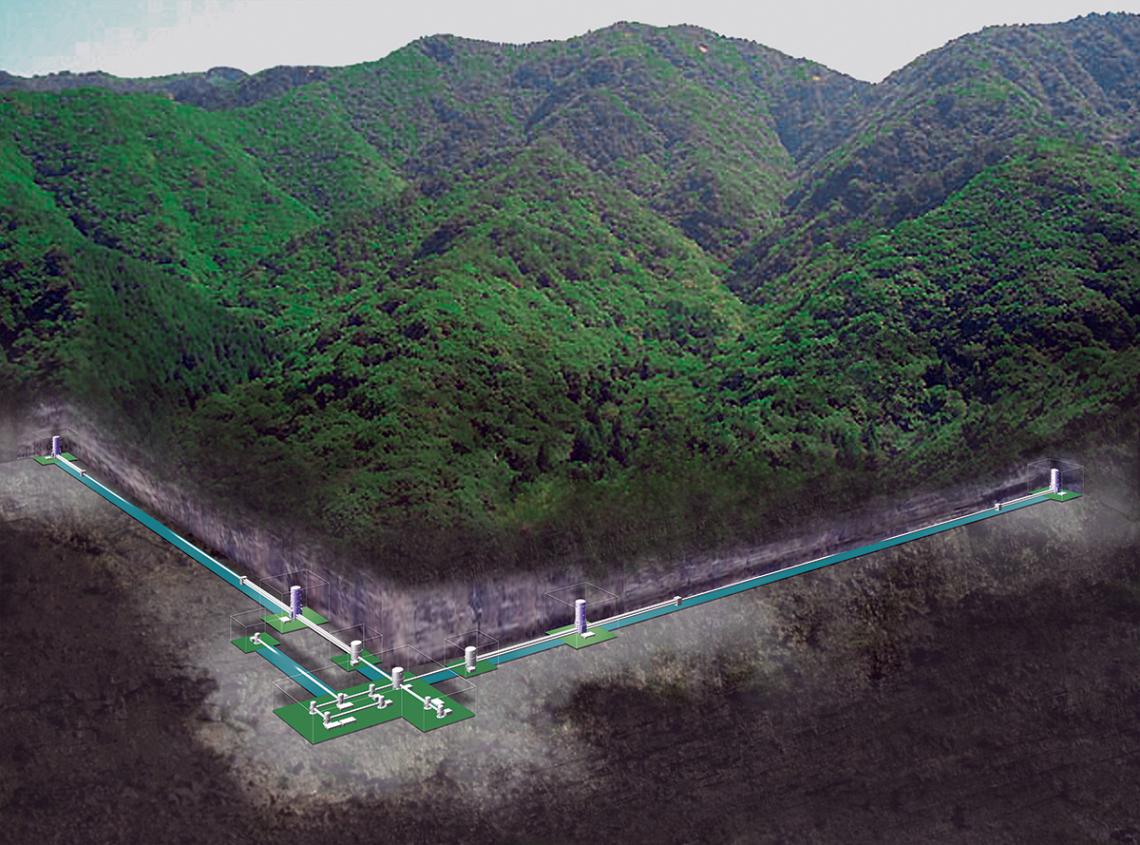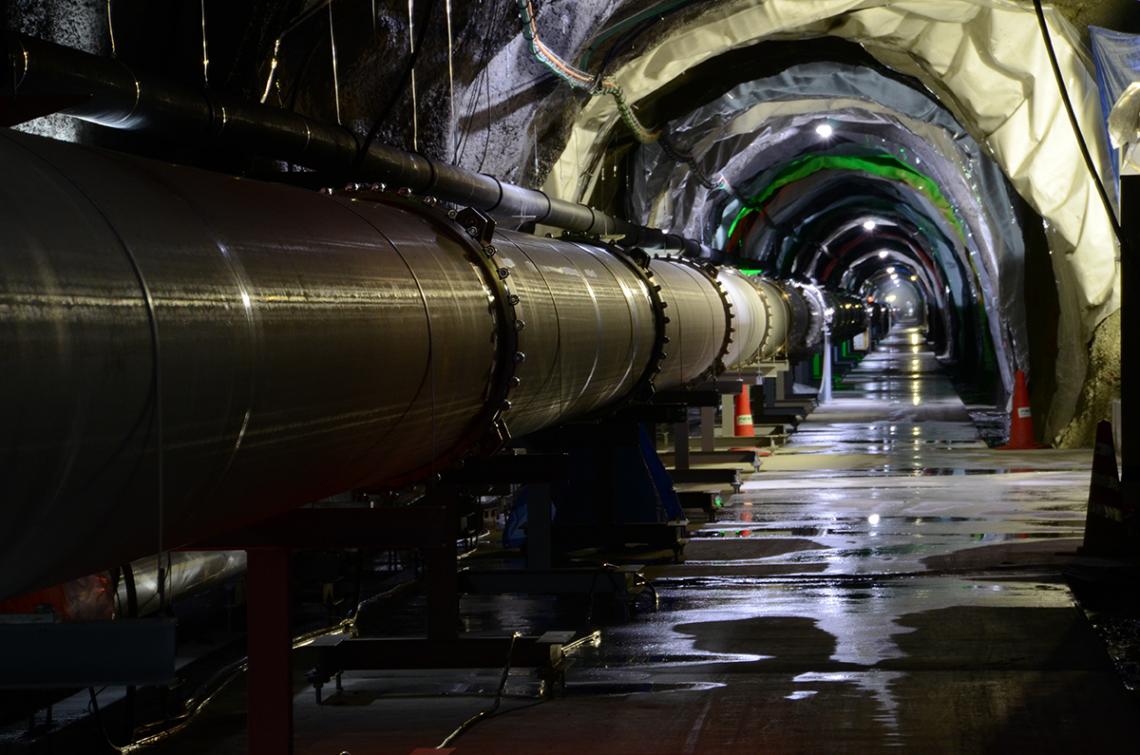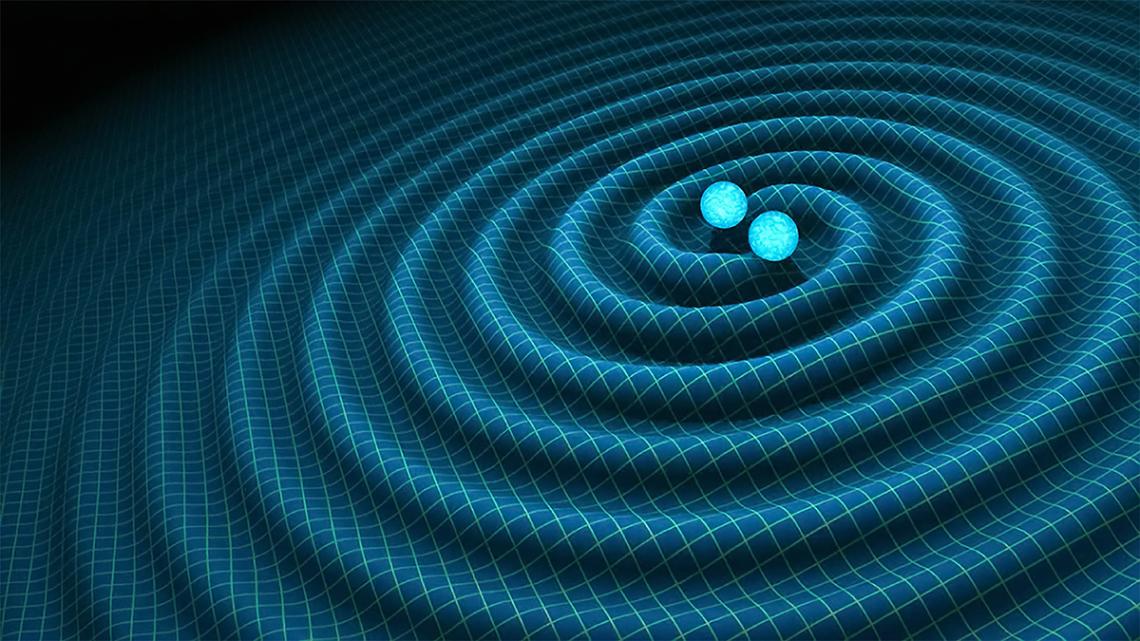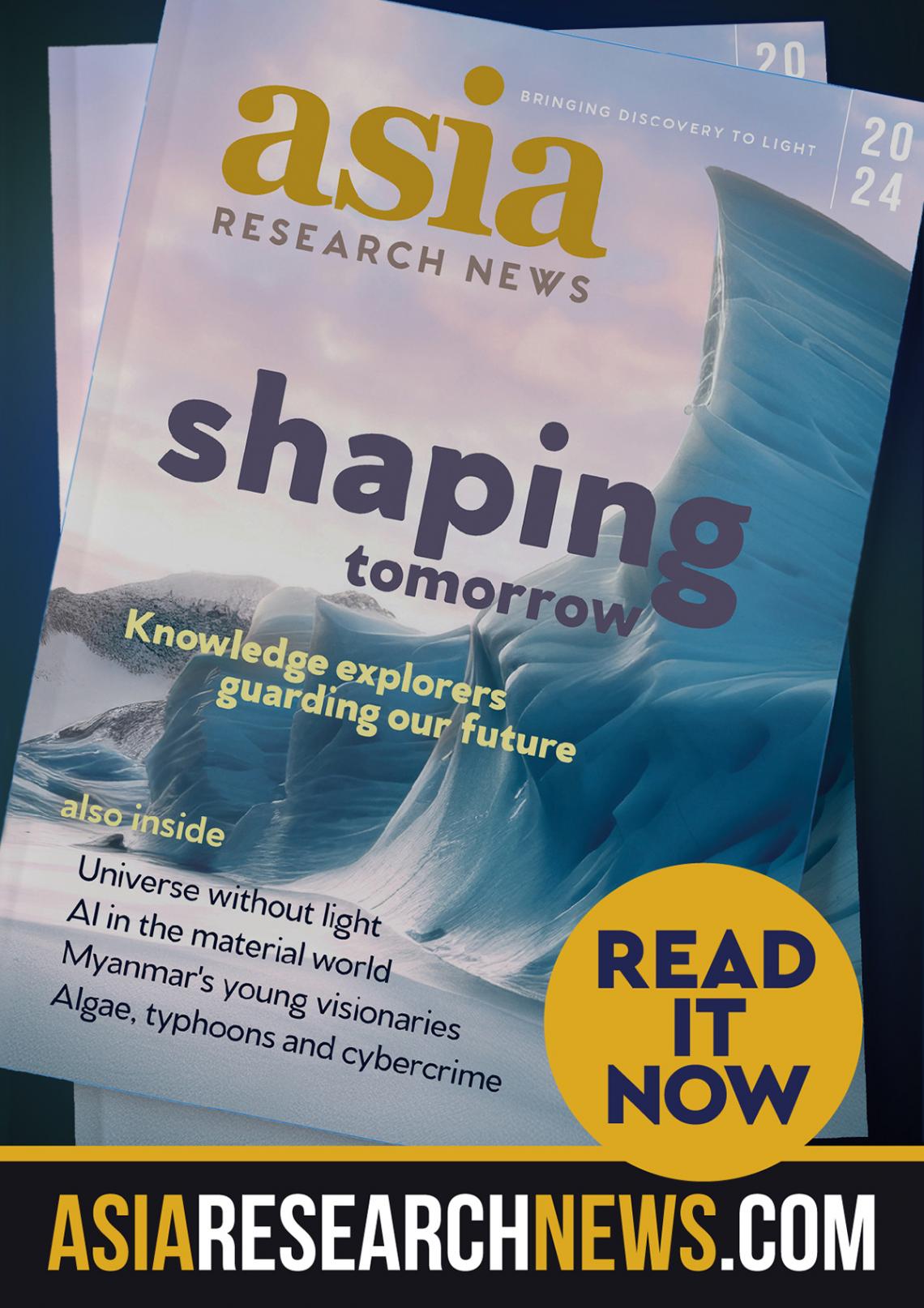Simulation of two merging black holes showing the degree of perturbation of the space-time fabric creating gravitational waves.
This story is featured in the Asia Research News 2024 magazine. If you would like to receive regular research news, join our growing community.
Get the news in your inbox
Neutrinos & gravitational waves
When theoretical physicist Jun'ichi Yokoyama was 21 years old, he was interviewed by a panel of older, experienced physicists who wondered if the young researcher had what it took to join their university's graduate program.
"Describe a way to observe the universe that doesn’t involve light," one asked him.
"Maybe neutrinos or gravitational waves," replied young Yokoyama.
A roar of laughter echoed through the room and Yokoyama went home that day feeling dejected.
Fortunately, Yokoyama was accepted into the graduate school, and he put the interview behind him.
Yokoyama continued with his career in physics, advancing our understanding about how the universe is shaped, and was recently named the third director of the Kavli Institute for the Physics and Mathematics of the Universe (Kavli IPMU) at The University of Tokyo.
Jun'ichi Yokoyama, Director of Kavli IPMU
Now at the age of 60, older than the professors that interviewed him all of those years ago, Yokoyama understands how far-fetched his ideas must have seemed to the panel.
Yet he was right.
Just as Yokoyama was finishing up his master’s degree, researchers around the world detected neutrinos from an exploding star 160,000 light years from Earth. Those who detected it were none other than a group of experimentalists working in the same building as Yokoyama. The group’s leader Masatoshi Koshiba was later awarded the Nobel Prize in Physics in 2002.
Then exactly 31 years after his interview, gravitational waves were discovered in 2015, which led to another Nobel Prize in Physics to US researchers. Gravitational wave detectors now exist in the United States, Europe and Japan, paving the way for major international collaborations using gravitational waves to study things about the Universe that no one has ever been able to before.
An artist's conception of how gravitational waves distort the shape of space and time in the Universe.
Did you know?
The discovery of gravitational waves opened up opportunities to look back further in time, to when the Universe may have been a trillion to a quadrillion times hotter than the hottest place in the Universe today.
In the vast Universe, gravitational waves are swift, unseen ripples, racing at the speed of light — 300,000 kilometers per second. These waves create a gravitational pull, causing a rhythmic squeeze and stretch as they travel across space.
Lessons from the past
Currently, no one knows what the Universe looked like before 380,000 years old. This point in time is often called First Light, when the first atoms appeared which researchers can detect and study. Yokoyama likens this to studying stars like our Sun. When it is sunny, there is no problem measuring the Sun’s properties, but when it is cloudy, no one can do anything.
“In a way, the universe before 380,000 years is all cloudy. But gravitational waves can help shed light on this. Using gravitational waves we can study the exact moment cosmic inflation and the Big Bang happened.”
So 21-year-old Yokoyama was right all along. What lesson does this teach us?
"My advice to young researchers is to not take everything I say to heart. Because obviously people my age don't always know what we're talking about," he said.
“What is appropriate for people my age is to create an environment which can support these young researchers to do what they do to the best of their ability.”
Something that Yokoyama hopes to accomplish as the new leader of Kavli IPMU.
If there is some time left over, Yokoyama can return to his own research on inflation theory, the idea that right after the Big Bang, the universe very briefly, expanded extremely rapidly. While inflation lasted less than a second, many researchers believe it was enough to trigger growth and the birth of all things in the universe we know today.
Japan's KAGRA is the first gravitational wave observatory in the world to be built underground. This is an overhead view of the telescope installed beneath Mt Ikeno.
But to test Yokoyama’s theories, he will need the help of experimental scientists to find evidence. Evidence Yokoyama believes can be found with gravitational waves. It is one of the reasons why Yokoyama had volunteered to become spokesperson for KAGRA, Japan’s gravitational wave detector, until recently, in order to drive forward collaborations between the other detector projects LIGO in the US and VIRGO in Europe.
“What I really want to see is the launch of DECIGO, a gravitational wave detector that will be launched into space. But before we can even think of doing that, we need to work on perfecting the gravitational wave detectors on Earth.”
At least while he waits for the experiments to improve, Yokoyama only needs the most basic of tools to continue his theoretical work.
“All I need is a piece of paper and something to write with.”
A vacuum duct stretches a 3-km length through the KAGRA (X arm) tunnel.
Did you know?
To date, gravitational wave detectors have identified waves resulting from the merging of neutron stars and black holes. But researchers say gravitational waves can also help clarify other aspects of our Universe's foundation, including why more matter was left over after Big Bang which led to the birth of stars and planets and humans.
Kavli Institute for the Physics and Mathematics of the Universe (Kavli IPMU) has a number of ongoing research on gravitational waves. Here are a few recently published studies.
How the tiniest particles saved us from annihilation
Neutrinos, the smallest particle we know may have rearranged matter and anti-matter after the Big Bang, allowing life to survive. A 2020 study suggests that gravitational waves, ripples in space-time, may hold this evidence. According to the Big Bang theory of modern cosmology, matter and anti-matter should have annihilated each other completely, but our existence contradicts this. The study proposes that a phase transition in the early Universe, facilitated by neutrinos, created a thin tube of magnetic fields called cosmic strings that rearranged themselves, generating tiny wobbles in space-time called gravitational waves that scientists could detect in the future through space-borne observatories.
Why more matter was left over after Big Bang
The existence of more matter than anti-matter after the Big Bang, allowed the creation of the Universe and life but contradicts current physics theories. The answer could be in Q-balls, a blob of field with similar characteristics to the Higgs boson. In 2021, a team of theoretical researchers, including Kavli IPMU scientists, proposed a new method to detect Q-balls in gravitational waves. The researchers suggest that Q-balls decay so suddenly that they would have become detectable gravitational waves. If this theory holds, the detection of gravitational wave signals could confirm a new understanding of the early Universe.
Exploring the earliest Universe dynamics
Scientists are looking to understand how gravitational waves are made. A 2023 study revealed a new mechanism by oscillons localized non-linear massive structures originating from the Universe's inflationary period following the Big Bang. Oscillons, can persist for long periods, and their decay generates gravitational waves. Researchers simulating the early Universe, confirmed the presence of oscillons and demonstrated that their decay could produce detectable gravitational waves. The ongoing advancements in gravitational wave detectors and supercomputing resources are expected to bring more insights into the early Universe.
Further information
Prof Jun'ichi Yokoyama
[email protected]
Kavli Institute for the Physics and Mathematics of the Universe
Motoko Kakubayashi
[email protected]
Kavli Institute for the Physics and Mathematics of the Universe
This image is an artistic representation of the merging of two black holes and the gravitational waves that ripple outward as the black holes spiral toward each other. The black holes — which represent those detected by LIGO on Dec. 26, 2015 — were 14 and 8 times the mass of the sun, until they merged, forming a single black hole 21 times the mass of the Sun. In reality, the area near the black holes would appear highly warped, and the gravitational waves would be difficult to see directly.
We welcome you to reproduce articles in Asia Research News 2024 provided appropriate credit is given to Asia Research News and the research institutions featured.


